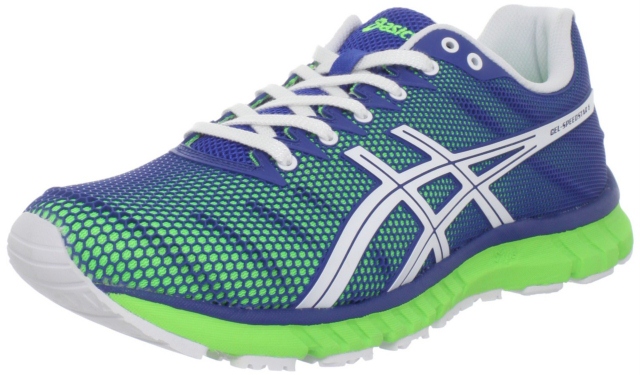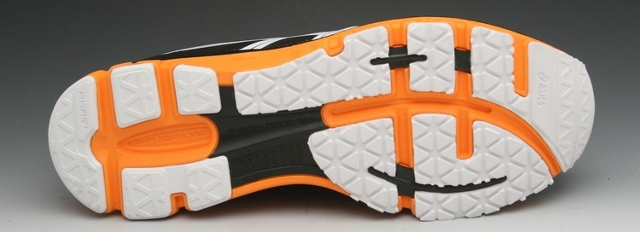I’m a cautious minimalist – I think a little bit of barefoot running and minimalism goes a long way. So what do I run in for the majority of my mileage?

Let me ask you a question: why do you train in flats, run barefoot strides, or use any pair of minimalist running shoes?
If you answered, “to strengthen my feet and lower legs, increase my running economy, and improve my form!” then good job! That should be your response if your goal is to improve as a runner.
Some runners want to go 100% barefoot – and that’s fine too! But I consider that more of a lifestyle choice than a training tool or method of maximizing performance on race day.
During my interview with Jeff at Runners Connect, I explain that I’m a “cautious minimalist.” Ideally, there is a controlled amount of barefoot running and minimalist shoes in a training program. But it’s not overdone and it’s balanced with more supportive shoes.
Just like interval workouts, hill sprints, or core exercises, minimalism is a tool to help you accomplish a specific training goal. I wouldn’t run intervals or hill sprints every day, so I don’t run in very minimalist shoes every day.
Instead, the majority of my mileage is in a more neutral, cushioned shoe like the ASICS Speedstar 6.
ASICS Speedstar 6 Review: Specs and Colors
Believe it or not, the picture I used above is the men’s shoe. I know, the colors are a little girly. Since I’m 100% shameless I couldn’t care less about the color of my shoes (though I’d never buy the ASICS Gel-Noosa. I have to draw the line somewhere!) so this doesn’t bother me.
If you’re more concerned with looking good out on your run there’s a dark blue and orange version (picture below) that’s more masculine. Regardless of the color of the Speedstar model you choose, these are a great “bridge” between a more structured shoe and a minimalist trainer.
I’ve been training in ASICS Speedstars for over five years and can get away with running my longest workouts in them – even up to 22 miles. If you have always worn a more structured shoe then I wouldn’t jump into the Speedstars for 100% of your mileage. Be smart and make the transition gradually since they have neutral pronation control. In other words, there’s no pronation control.
Weighing in at 8.9 ounces, the Speedstar is light but not as light as more traditional minimalist shoes like the the Merrell Trail Glove, which weighs only 6.2 ounces. This extra weight comes from a combination of a more supportive upper – more on that later – and a cushioned sole.
The sole itself is standard for a neutral shoe with no dual density foam. You can tell if your shoes have this type of foam if there’s a darker, harder wedge of foam on the inner heel area of your shoe. It’s often called a “roll bar” that helps control pronation. The ASICS Speedstars have a 9mm heel-toe drop with a 28mm heel height and a 19mm toebox height.
I discovered that this difference is about average for neutral ASICS shoes but closer to the ground compared to the Landreth or Nimbus models.
The upper is constructed differently than most running shoes, which I really like. ASICS describes it as “blister free fun with a one-piece breathable mesh” upper. It can sometimes feel snug, but it in no way impedes foot movement or constricts the toes.
Let’s recap a few of the ASICS Speedstar 6’s key specs:
- Neutral pronation control (i.e., none)
- 8.9 ounces
- 9mm heel-toe drop (28mm heel, 19mm toe)
- Girly men’s color
- Psuedo-minimalist running shoe
- Cost: $75 on Amazon
How do they perform on trails? And more Speedstar Q&A

I’ve been recommending the ASICS Speedstars for a long time on my running resources page so I’ve fielded quite a few questions about them over the last two years. Let’s go through some of the common questions I receive about the Speedstar 6 trainers.
How do they perform on trails?
For the most part, great! I run most of my mileage in Washington, DC’s Rock Creek Park on a variety of trails. Some are smooth, hard packed dirt while others are rocky and extremely hilly. I’ve never had a problem with traction during the 4+ years I’ve been trail running in the ASICS Speedstars.
To get a sense of what Rock Creek looks like, check out this trail running post. I’m lucky to have a training spot like this!
Most runners will do just fine on trails with a shoe designed for the roads. But when you start running on extremely slippery surfaces (stream crossings, lots of mud, wet rocks) then you may want to look into a shoe designed for technical terrain. However, the Speedstars will work very well on crushed gravel, dirt, grass, cinder trails, and most non-technical trails.
What shoes are similar to the ASICS Speedstars?
The Speedstars are a neutral, firm, no-frills running shoe. There are a lot of models that have a similar style that you can try:
- ASICS Gel-Lite33
- Adidas adiZero Boston 3
- ASICS Gel-Blur33
- Inov-8 Road-X 233 (slightly more minimalist)
Ultimately, you’ll need to experiment with a variety of shoes to see what really works for you. I typically try 6-8 new pairs of shoes every year. It not only keeps me aware of what’s available in the market, but wearing different shoes is another form of variety that I can introduce into my training.
How long do the Speedstars last?
This will depend on a lot of factors:
- How often you wear them casually (to the gym? long walks?)
- Your weight
- How frequently you run in them (i.e., do you let your shoes recover or do you run in them every day?)
- The surfaces that you run on
- Your particular stride pattern
Shoes will typically last about 300-500 miles but will vary significantly based on your particular use pattern and biomechanics. The Speedstar sole – which is what wears out and requires replacing – is standard foam with no dual density foam. This wears down faster so these shoes may need replacing sooner than other models.
If you’re 125 pounds, fairly efficient, and run mostly on trails (like me) then your shoes will last longer. But if you’re 230 pounds, have an inefficient stride pattern, and you always run on concrete then your shoes will degrade much more quickly.
Look for compression lines in the foam around the heel and inner midfoot (where most runners naturally pronate) for signs that your shoes need replacing. Consider them “aging lines” and when they’re frequent and deep the shoes should be retired.
Are the Speedstars for you?
There’s only one way to know: try them out! I suggest going to a specialty running store where you can try them on and go for a short run around the block in them. If possible, go at the end of the day when your feet are at their biggest (yes, they change sizes throughout the day) so you get an accurate size.
If you have to order online, Amazon seems to have the cheaper prices.
Remember, be gradual with all new training stresses – including shoe changes – and over time your body will slowly adapt. Combined with barefoot strides and a few foot strengthening exercises, you’ll develop significant lower leg and foot strength that will help you prevent more injuries.
Questions for you: Have you tried the ASICS Speedstar? What did you think? What’s your shoe of choice – and why?